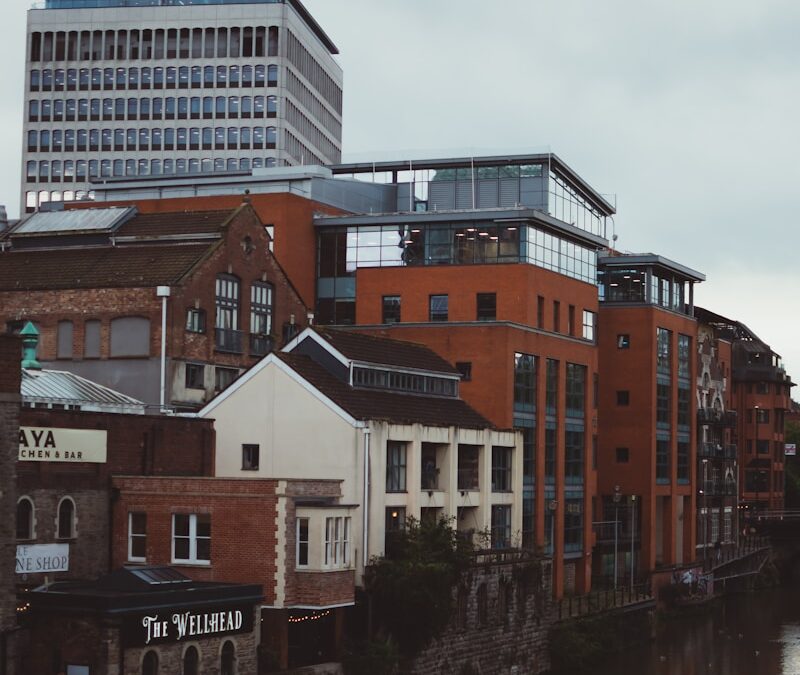Innovative Approaches to Urban Green Spaces in Vertical Environments
Integrating Green Spaces in Skyscraper Cities
The integration of green spaces in skyscraper cities is a crucial aspect of modern urban planning, particularly in regions like Saudi Arabia and the UAE, where cities such as Riyadh and Dubai are rapidly evolving. These urban areas are characterized by high-density living and innovative architectural designs that often include vertical complexes combining residential, commercial, and recreational spaces. Incorporating green spaces into these skyscraper cities not only enhances the aesthetic appeal but also provides numerous environmental and health benefits.
Green spaces in skyscraper cities can take various forms, including rooftop gardens, vertical forests, and indoor green walls. These spaces serve as vital oases in dense urban environments, offering residents and workers a connection to nature. In Riyadh, for instance, the design of green spaces in new skyscrapers is influenced by traditional Islamic gardens, which emphasize water features, shaded areas, and indigenous plants that can thrive in the local climate.
Dubai’s approach to integrating green spaces involves leveraging cutting-edge technologies such as AI and generative design. These technologies help architects and urban planners create optimized green spaces that enhance air quality, reduce urban heat islands, and promote biodiversity. By using AI to analyze environmental data, developers can design green spaces that are not only beautiful but also sustainable and resilient to changing climate conditions.
Adapting Green Spaces to Different Climates
One of the significant challenges in incorporating green spaces in skyscraper cities is adapting these spaces to different climates and environmental conditions. In hot and arid regions like Saudi Arabia and the UAE, the design of green spaces must consider factors such as water scarcity, high temperatures, and intense sunlight. This requires innovative solutions to ensure that green spaces can thrive and provide their intended benefits.
In Riyadh, green spaces in skyscrapers are designed with a focus on water conservation and efficient irrigation systems. Drip irrigation and rainwater harvesting are commonly used to minimize water usage. Additionally, selecting native and drought-resistant plant species helps reduce the need for extensive watering. Shading structures and reflective materials are also incorporated to protect plants from the harsh sun and to create cooler microclimates within the green spaces.
Dubai’s green spaces in skyscrapers are similarly adapted to the local climate. The city has pioneered the use of vertical gardens and green roofs that incorporate advanced irrigation technologies and climate-responsive design. These green spaces are not only visually striking but also play a vital role in mitigating the urban heat island effect. By reducing the ambient temperature and improving air quality, these green spaces contribute to a more comfortable and sustainable urban environment.
Leadership and Innovation in Urban Green Spaces
Promoting Sustainability through Green Space Design
Effective leadership and innovation are essential for promoting sustainability through the design of green spaces in skyscraper cities. In both Saudi Arabia and the UAE, government agencies, developers, and urban planners are working together to create green spaces that enhance urban living while addressing environmental challenges. This collaborative approach ensures that green spaces are integrated into urban development plans and maintained to provide long-term benefits.
In Riyadh, government initiatives such as the Green Riyadh Project aim to increase the city’s green cover and improve the quality of life for residents. This project involves planting millions of trees and creating green corridors that connect different parts of the city. By prioritizing green spaces in urban planning, Riyadh is setting a benchmark for sustainable development in the region.
Dubai’s leadership in green space innovation is evident in its ambitious projects, such as the Sustainable City and the Dubai Creek Harbour. These developments emphasize the importance of green spaces in creating livable and resilient urban environments. By incorporating advanced technologies and sustainable practices, Dubai is transforming its urban landscape and setting an example for other cities to follow.
Business Success through Green Urban Design
The integration of green spaces in skyscraper cities presents numerous opportunities for business success. Green spaces enhance the desirability of urban properties, attracting tenants, investors, and customers. Businesses located in buildings with well-designed green spaces benefit from increased property values, improved employee well-being, and greater customer satisfaction.
In Saudi Arabia, companies are recognizing the value of green spaces in creating attractive and productive work environments. Office buildings with rooftop gardens and indoor green walls provide employees with access to nature, which can reduce stress and increase productivity. Retail spaces with integrated green areas also attract more visitors, enhancing the commercial viability of these properties.
Dubai’s business landscape is similarly benefiting from the integration of green spaces. Real estate developers are incorporating lush gardens, shaded walkways, and green rooftops into their projects to create appealing and sustainable urban environments. By prioritizing green space design, businesses in Dubai can differentiate themselves in a competitive market and contribute to the city’s vision of a sustainable future.
Conclusion: The Future of Green Spaces in Skyscraper Cities
The integration of green spaces in skyscraper cities is a crucial aspect of modern urban planning, offering numerous benefits for residents, businesses, and the environment. In regions like Saudi Arabia and the UAE, cities such as Riyadh and Dubai are leading the way in innovative green space design, setting new standards for sustainability and livability. By adapting green spaces to different climates and leveraging advanced technologies, these cities are creating vibrant urban environments that enhance quality of life and promote environmental stewardship.
For business executives, mid-level managers, and entrepreneurs, understanding the importance of green spaces in urban development is essential for navigating the future of sustainable cities. By embracing green space integration and supporting innovative design solutions, leaders can drive business success and contribute to the creation of healthier, more resilient urban environments. Together, we can build a future where green spaces are an integral part of skyscraper cities, enriching the lives of all who live and work in them.
—
#GreenSpaces #SkyscraperCities #UrbanPlanning #ClimateAdaptation #EnvironmentalDesign #UAE #SaudiArabia #Riyadh #Dubai #AI #Blockchain #Metaverse #GenerativeAI #BusinessSuccess #LeadershipSkills

